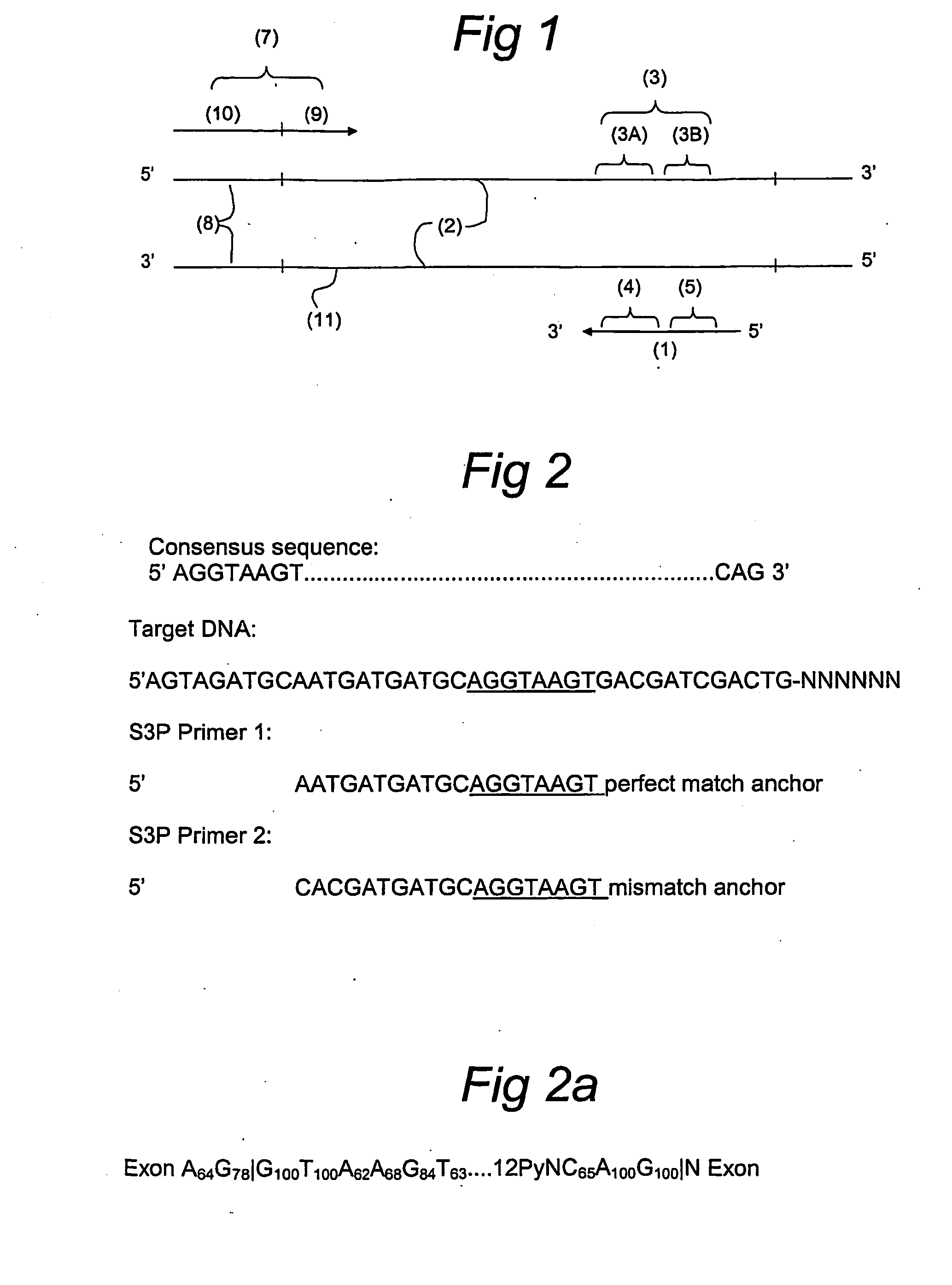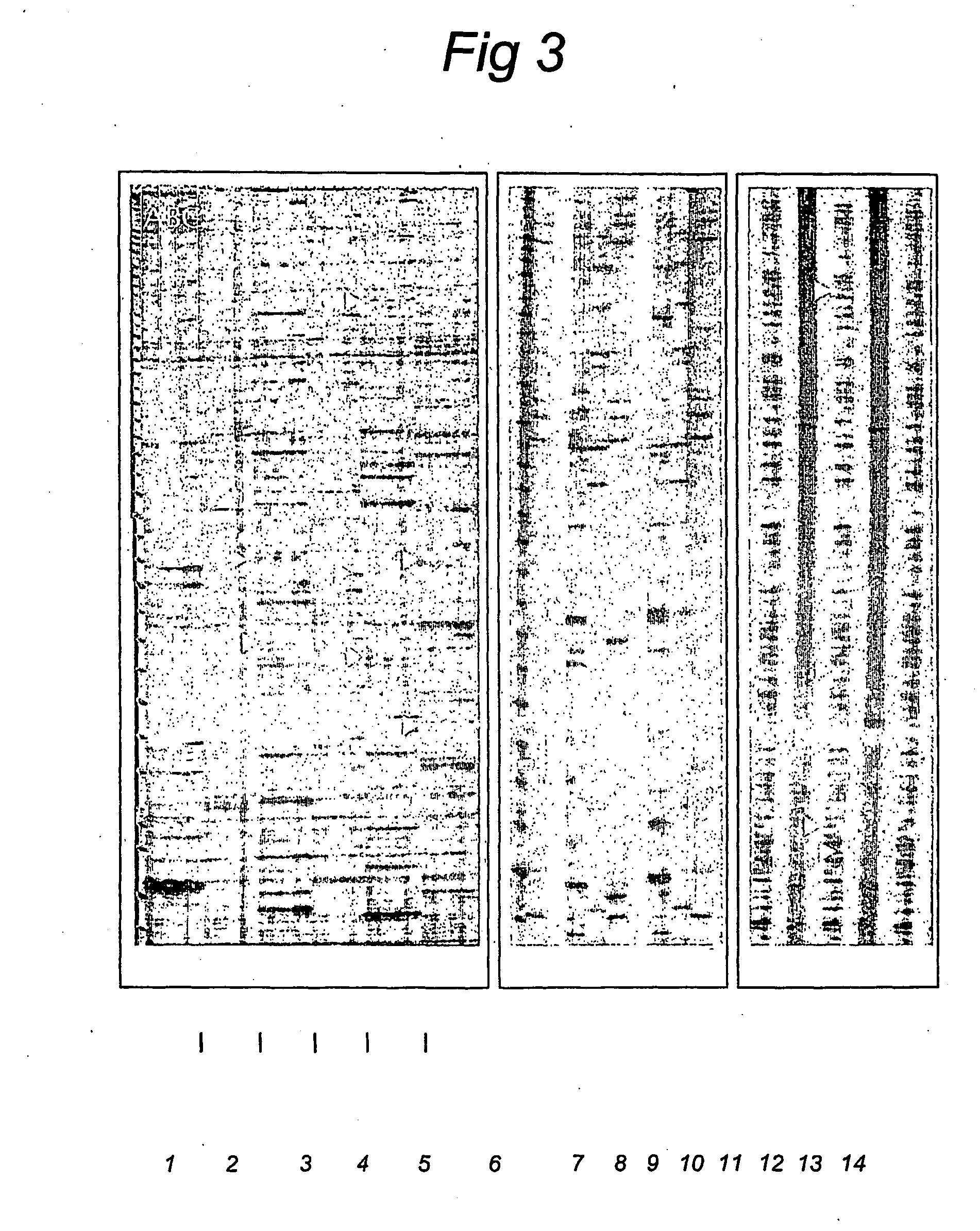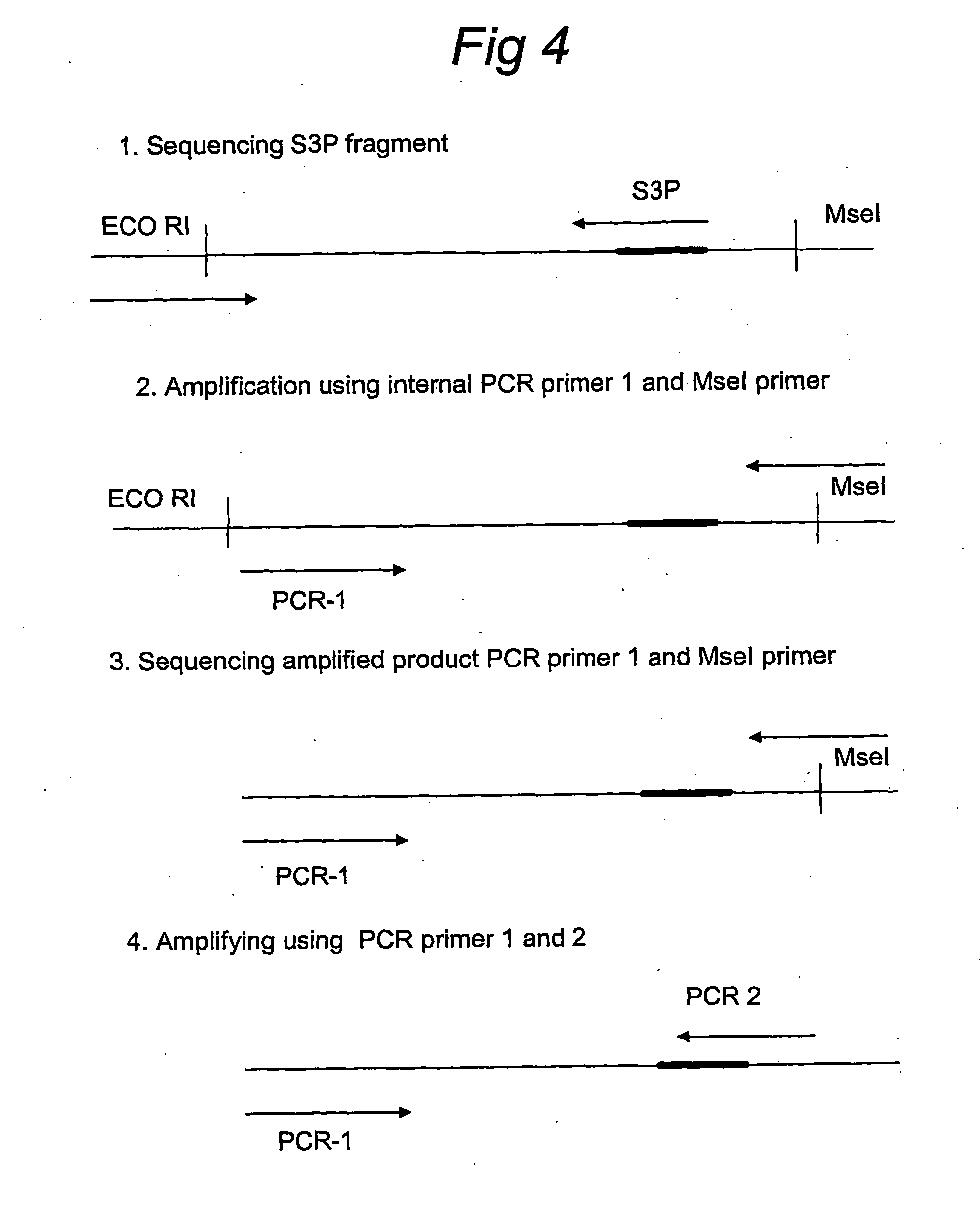Splice site aflp
a splice site and aflp technology, applied in the field of splice site aflp, can solve the problems that the basic aflp is not specifically capable of identifying aflp markers, and achieve the effect of improving the aflp quality and identifying the aflp quality
- Summary
- Abstract
- Description
- Claims
- Application Information
AI Technical Summary
Benefits of technology
Problems solved by technology
Method used
Image
Examples
example 1
[0109] DNA from the Arabidopsis lines Landsberg erecta and Columbia was used to generate AFLP fingerprints by use of a splice-site-specific primer (S3P primer in combination with an +0, +1, +2 or +3 EcoRI or MseI AFLP primer. AFLP-reactions with 12 different splice-site specific primers (Table 3) in combination with 10 different AFLP primers were performed on AFLP restriction-ligation mixture, +0 / +0 or +1 / +1 AFLP preamplification product.
[0110] Three different PCR-profiles were used for the amplification of the fragments. AFLP fragments obtained with were excised out of PAA-gels (56 AFLP-marker bands and 4 constant bands) and reamplified. Twelve markers were cloned by use of the Original TA Cloning Kit (Invitrogen) and 32 clones were sequenced on the MegaBACE. To find out if coding regions are preferentially amplified by Splice-site AFLP, the presence of coding regions in sequences of AFLP fragments obtained with Splice-site AFLP and sequences of Arabidopsis EcoRI / MseI+2 / +3 AFLP ma...
example 2
[0117] In this Example, it was the objective to enrich fingerprints for genic regions (intron or exon sequences) of the genome on a larger scale than in example 1. The targeting efficiency was determined by sequencing of splice-site PCR fragments followed by homology searches. Furthermore, several splice-site PCR primers were tested on tomato parental lines. The 12 selected and designed splice-site primers from the previous example were used to determine the optimal primer / enzyme combination and the optimal amplification profile. They were designed on Arabidopsis sequences but were also usable to generate fingerprints in tomato. An example of fingerprints generated using splice-site primers on Arabidopsis and tomato is shown in FIG. 5. This example clearly shows the segregation of markers in the RIL8 population. Furthermore, it shows that the splice-site primers can be used to generate reproducible fingerprints in tomato.
[0118] To determine the targeting efficiency in tomato splice...
PUM
| Property | Measurement | Unit |
|---|---|---|
| nucleic acid sequence | aaaaa | aaaaa |
| genetic composition | aaaaa | aaaaa |
| resistances | aaaaa | aaaaa |
Abstract
Description
Claims
Application Information
 Login to View More
Login to View More - R&D
- Intellectual Property
- Life Sciences
- Materials
- Tech Scout
- Unparalleled Data Quality
- Higher Quality Content
- 60% Fewer Hallucinations
Browse by: Latest US Patents, China's latest patents, Technical Efficacy Thesaurus, Application Domain, Technology Topic, Popular Technical Reports.
© 2025 PatSnap. All rights reserved.Legal|Privacy policy|Modern Slavery Act Transparency Statement|Sitemap|About US| Contact US: help@patsnap.com



